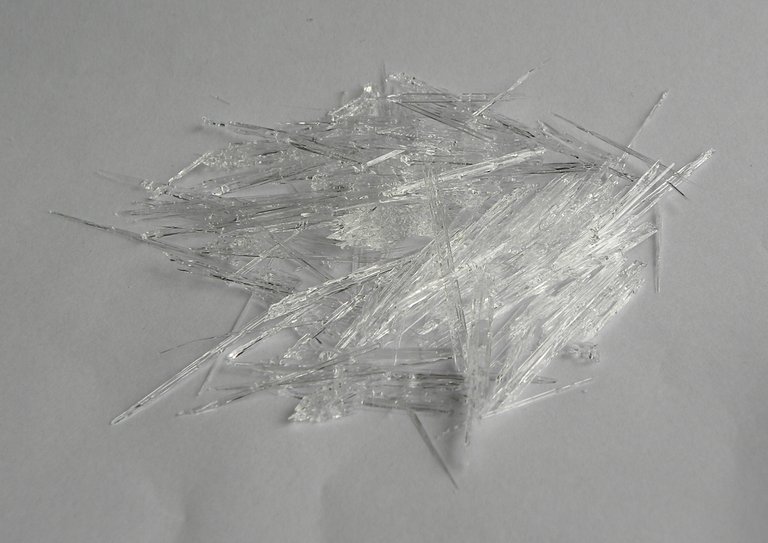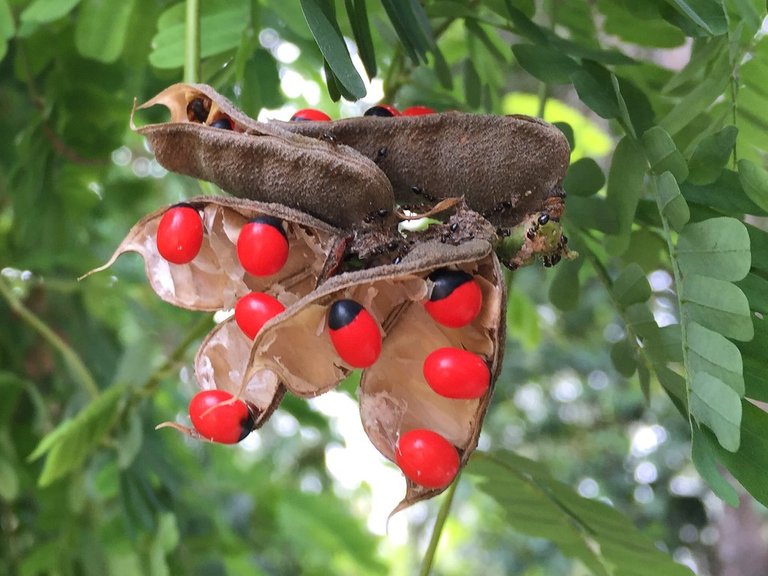[Toxicology] - Organic and Vegetable Poisoning
In my post on Cyanide Toxicity and Why We Haven't Died From Vegetable Acid Poisoning we started looking at vegetable acids and poisoning, and today we will continue with toxicology with organic acids and vegetable poisoning. There are a lot of vegetable or organic compounds that we do not have an idea of how toxic they are. Take, for instance, Castor oil is a very good laxative, but its seed and remnant are very poisonous with no treatment for humans currently. Today, we will be looking at two organic acids in toxicology and we will start with Oxalic Acid poisoning, then Carbolic acid poisoning, as well as vegetable poisoning such as Ricinus Communis poisoning, Croton Tiglium poisoning and Abrus Precatorius Poisoning.

wikimedia commons
Oxalic acid is a crystalline corrosive acid that resembles magnesium sulfate and zinc sulfate in its characteristics. Its injury severities can depend on two factors which are the amount consumed and the concentration of the acid. Oxalic acid creates a local and systemic effect. The local effect of oxalic acid will involve the corrosion of the GIT mucosal. It gives a sour taste, Mouth pain, and causes continuous vomiting and causes purging. In the systemic effect, the acid can cause shock, hypocalcemia, and it causes Oliguria. Oxalic acid can be fatal when about 5 to 15 grams is consumed and it can take between 1 hour to 5 days to manifest. Treatment of Oxalic acid poisoning would include stomach wash, also lime water is used as lavage. Antidotes such as chalk chich convert calcium to calcium oxalate can be used.
Carbolic acid poisoning is another organic poisoning. Carbolic acid also known as phenol, in its pure state is a colorless, crystal but turns pink and liquefies when left in the air and exposed to light. It has a sweet burning taste. Carbolic acid poisoning gives signs and symptoms which is regarded as carbolism that exhibits locally, causing necrosis of tissues, In the GIT, it causes burning pain, difficulty in speech and swallowing, anesthesia, corroded lips and mouth, and systemic action which includes shock, weak pulse, contracted pupil, phenolic smell, kidney damage, dark smoky urine, and eventual decreased urine output. Carbolic acid poisoning fatal dose would be about 20 to 25 drops of pure phenol, and about 2 times the quantity if it is from a disinfectant that has carbolic acid, with a fatal manifestation time of within 3 minutes and 5 hours. Treatment includes flushing the stomach with Glycerin as lavage, magnesium sulfate, and sodium bicarbonate are used to make the urine alkaline.
Ricinus Communis poisoning or castor oil seed/plant poison is a vegetable poison, and its active compound is Ricin which is a toxin, It is also known as a phytotoxin, and it destroys the ribosome preventing protein synthesis which will lead to the death of the cell, tissue damage, blood agglutination, and cell lysis. It is beautiful how we get its oil the Castor oil which isn't poisonous because if the seed is crushed in its fresh state and swallowed, it is poisonous, and the same thing goes for the residue after the oil has been extracted. when cooked, it isn't poisonous. When a person has Ricinus Communis poisoning, they can show signs and symptoms in the GIT which include salivation, burning throat, nausea, vomiting, and colicky abdominal pain. In the Muscle, they present with muscle cramps, and muscle dehydration. In the Central Nervous system, patients can convulse, go into a coma, and eventually die. In the Skin, patients would suffer from dermatitis, Asthma, and conjunctivitis. A lethal dose would be the consumption of Ricin of about 5mg to 10mg which will be about 10 seeds. Treatment is basically supportive care, as there is no antidote for ricin.
Croton Tiglium poisoning is another vegetable poison, and its seed and oil are poisonous with active poisonous substances known as crotin, and crotonoside, which are toxalbumins and glycosides respectively. It acts as a vesicant, causing skin irritation. Its signs depend on what part of the vegetable is consumed. If the seeds are consumed, they possess the same symptoms as Ricin poison, and when the oil is ingested, it can cause blistering, vesication, GI distress, abdominal pain vomiting, anal pain, collapse, and could lead to death when a high dose is ingested. Lethal doses are 4 to 5 seeds or 2 drops of croton oil, with a fatal period of 4 hours to 3 days. Treatment also includes supportive care as there is no antidote currently.
Abrus Precatorius also known as Jequirity bean is a vegetable poison and the entire plant is poisonous from root to seed. The seed which is a red oval-shaped bean seed is tasteless and odorless. Abrin is responsible for the toxicity of Abrus Precatorius, and it is a toxalbumin where patients who are poisoned show symptoms similar to a viper snake bite. The sign and symptoms would include nausea, vomiting, abdominal pain, collapse, skin swelling, and necrosis, and could lead to death. As little as 1 to 2 seeds can be lethal in both young and old or 90 to 120 mg when injected, and the patient could die within 3 to 5 days. Treatment includes ingestion of anti-abrin, gastric lavage, and purgative.
https://www.mountsinai.org/health-library/poison/oxalic-acid-poisoning
https://www.pediatriconcall.com/poisoning-center/oxalic-acid-acid-of-sugar-salt-of-sorrel/70
https://accessmedicine.mhmedical.com/content.aspx?bookid=2284§ionid=248385129#1174606708
https://www.mountsinai.org/health-library/poison/carbolic-acid-poisoning
https://www.pediatriconcall.com/poisoning-center/carbolic-acid-phenol/63
https://www.sciencedirect.com/topics/agricultural-and-biological-sciences/ricinus-communis
https://www.ncbi.nlm.nih.gov/pmc/articles/PMC3210461/
https://www.ncbi.nlm.nih.gov/books/NBK441948/
https://www.ncbi.nlm.nih.gov/pmc/articles/PMC3087745/
https://www.pediatriconcall.com/poisoning-center/croton-tiglium-croton-oil-and-seeds-jamalgota/65
https://inchem.org/documents/pims/plant/abruspre.htm
https://www.pediatriconcall.com/poisoning-center/abrus-precatorius-ratti-gunchi/13



Nice post I always been curious how they prepare acid,now I got the idea from your post.
Wow!! Please do not prepare acids and poisons yourself, just read for educational purpose
Thanks for your contribution to the STEMsocial community. Feel free to join us on discord to get to know the rest of us!
Please consider delegating to the @stemsocial account (85% of the curation rewards are returned).
Thanks for including @stemsocial as a beneficiary, which gives you stronger support.
Yay! 🤗
Your content has been boosted with Ecency Points, by @ireti.
Use Ecency daily to boost your growth on platform!
Support Ecency
Vote for new Proposal
Delegate HP and earn more
Really informative and educative post
This is indeed an eye opener... Hmmm.. most toxins coming from the same vegetables we were expected to get a lot of vitamins from
What am irony, hehehw
Lol!! Do you know that as a child, I usually cut and play with Croton Tiglium, it's funny how I never for once put it in my mouth.
Wow.... That's a testimony oh
It was in my dad's garden but as children, we never had interest in our father's garden and would only take the things we needed from there.
Thank God you didn't have a bite of it 😂
Congratulations @ireti! You have completed the following achievement on the Hive blockchain And have been rewarded with New badge(s)
Your next target is to reach 100 upvotes.
You can view your badges on your board and compare yourself to others in the Ranking
If you no longer want to receive notifications, reply to this comment with the word
STOPCheck out our last posts:
Support the HiveBuzz project. Vote for our proposal!